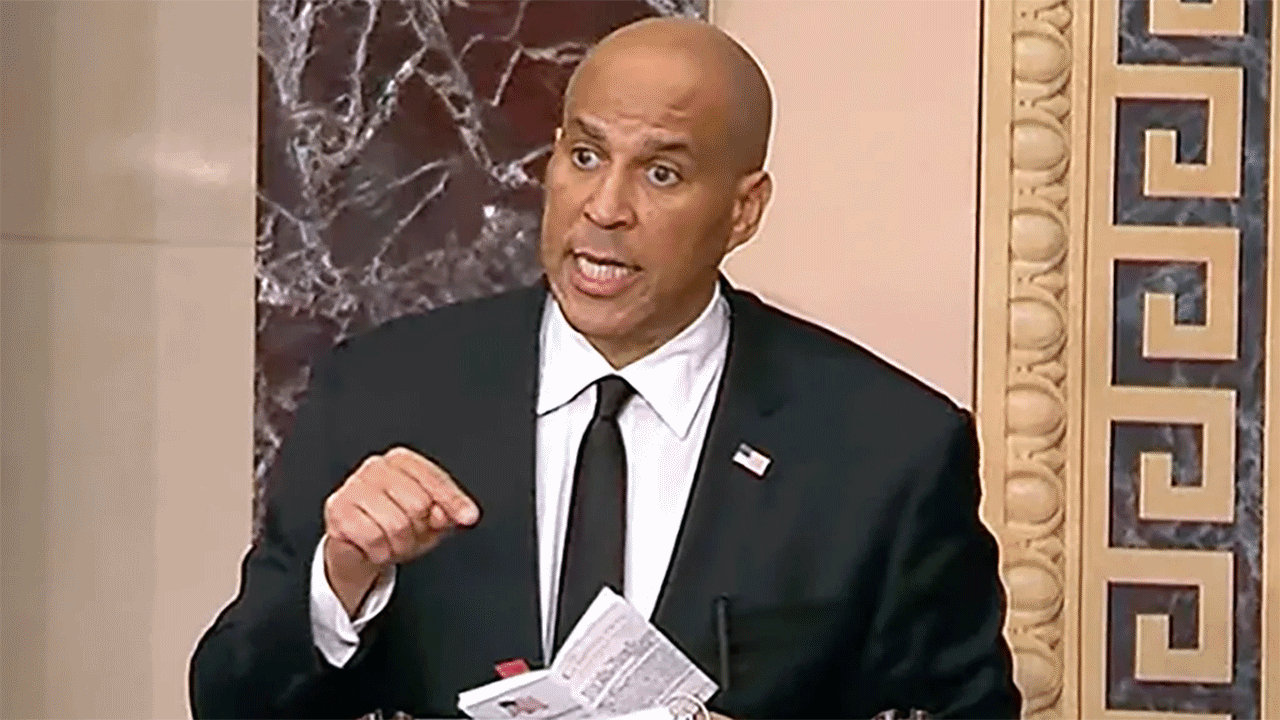There are two ways to size up Tuesday’s huge Wisconsin election victory by liberal Supreme Court candidate Susan Crawford.
One is that it was practically “par for the course,” the latest case of a recurring Democratic turnout edge in lower-turnout elections, a pattern that has produced almost identical double-digit liberal margins in four of the last five big court elections dating back to 2018.
The other is that this contest belongs in its own exceptional category, a striking political statement at an extraordinary political moment. Never before has a judicial election anywhere in the country been so costly, so nationalized, so closely watched by the outside world, and so dominated by two outside figures, President Donald Trump and his billionaire adviser Elon Musk, who are lightning rods across much of the world.
.
While Crawford’s 10-point margin was a close replica of liberal court victories in 2018, 2020, and 2023, far more Wisconsinites participated in this contest than in those earlier races.
In that sense, this wasn’t just another “low turnout” election win for Democrats and defeat for Republicans.Roughly half the state’s voting-age adults voted, a turnout that obliterated the old record of 40% in 2023, which had far outstripped previous contests.
More: All our reporting on the Wisconsin Supreme Court race between Susan Crawford, Brad Schimel
This was far closer to a November midterm turnout than a typical spring turnout.More than 2.3 million Wisconsinites voted, which approaches the raw number of votes (2.42 million) cast in Wisconsin’s 2014 race for governor.
At about 50% of voting-age adults, the turnout in this race exceeded the most recent fall midterm turnout in most of the 50 states, a mind-boggling level for a spring election.
How did that happen?
Susan Crawford and Brad Schimel both attracted record vote totals
Both sides showed up in record numbers, fueled by unprecedented spring spending, unprecedented organizing, unprecedented attention, unprecedented polarization over Trump’s second term, and the massive political stakes in Wisconsin when it comes to control of the state’s highest court.
Conservative candidate Brad Schimel easily blew past previous vote totals for conservative court candidates. And a really robust turnout was something Republicans expected to operate in their favor, assuming it would mean more Trump voters were casting ballots.
But Crawford got far more votes than anyone ever has in a Wisconsin court race. She more than doubled the winning vote total of the liberal winner in 2018. She topped the winning liberal tally in 2023 by almost 300,000 votes. She got more votes than either major party candidate for governor did in a November midterm election a decade ago.
It is impossible to know from the vote totals whether Crawford’s victory was almost entirely the product of Democratic voters being more motivated than Republican voters, or whether it also reflects at least some Republicans and independents souring on Trump or reacting against Musk amid the tumult of this presidency.
In other words, did people who voted for Democrat Kamala Harris last fall simply turn out in much larger numbers this time than people who voted for Trump because Democrats are so appalled by what Trump and Musk are doing?
Or, at a time when Trump’s negatives are rising in the polls, did some modest but meaningful slice of soft Trump voters “cross over” and vote for Crawford?
The answers to those questions matter, because they go to the meaning of this election, and whether it should be viewed more narrowly as a recurring “spring” problem for the GOP, or an off-year turnout war that you’d expect to favor the aggrieved out-party, or more broadly as some kind of barometer of public sentiment toward Musk and Trump (which would make it an even bigger alarm bell for Republicans).
Either way, the combination of Musk’s high-profile involvement and Schimel’s decision to put Trump’s endorsement and his support for the president at the center of his closing campaign message failed to make this race competitive. If it turned out more Trump voters, it probably turned out even more anti-Trump voters.
In fact, the losing conservative margin in the high-profile court race was several points worse than the losing conservative margin in the low-profile race for state School Superintendent on the same ballot.
The court result did underscore some recurring challenges for Republicans in the Trump era.
One is that the party is struggling in elections where Trump is not on the ballot. Since the beginning of Trump’s first term, the “Republican” side has lost four of five state Supreme Court elections, both contests for governor (2018 and 2022), and two of three U.S. Senate races (2018, 2024).
Democrats have immense issues of their own, led by their decline among working-class voters. But they’ve won most of Wisconsin’s big elections over the past eight years.
By contrast, Republicans and conservatives have only reached 50% of the Wisconsin vote twice since 2018 in 12 elections for president, Senate, governor and state Supreme Court. Conservative court winner Brian Hagedorn got 50.2% in 2019 and Republican Sen. Ron Johnson got 50.4% in 2022.
The ceiling for the GOP has been strikingly low and the margin of error strikingly thin, including for Trump, who has never reached 50% in his three Wisconsin elections and never reached 50% approval in voluminous polling by the Marquette Law School during his two terms. A major factor in this pattern is the decline of GOP support in red, purple and blue suburbs, which was evident again on Tuesday.
Then there’s the collapse of conservative performance in court races, where conservatives used to prosper. The four double-digit liberal court victories have occurred in a wide range of turnouts, from 20% of voting-age adults in 2018 to roughly 50% on Tuesday.
The Trump era has shaped these races in two ways.
It has fueled Democratic anger and intensity and engagement. The liberal victories in 2018, 2020 and 2025 all occurred with Trump in the White House. And the victory in 2023 occurred after a conservative U.S. Supreme Court, with three Trump appointees, overturned the Roe v. Wade ruling enshrining abortion rights. Abortion figured in this race as well.
The Trump era has also featured an ongoing partisan realignment. The education divide has grown, with Democrats faring better among college-educated voters and worse among working-class voters.
Since the most reliable voters in lower-turnout elections tend to be college graduates, this has given Democrats a structural edge in many non-presidential contests. Trump’s success in turning out sporadic voters for his elections has not carried over as well into other elections.
In many smaller rural counties in regions like northern and western Wisconsin, there has been a steep drop-off from Trump’s performance for president to the performance of conservative court candidates.
Take the 12-county western Wisconsin TV market of La Crosse. Trump won it by 5 points in 2020 and 8 points in 2024.
But the liberal court candidate won it by 15 points in 2018, 4.5 points in 2019, 14 points in 2020, 10 points in 2023 and by 7 points in Tuesday’s election.
While that drop-off wasn’t quite as steep in other regions of the state Tuesday, it was significant everywhere.
Schimel’s 2025 margin was more than 15 points worse than Trump’s 2024 margin in the La Crosse region, almost 15 points worse in the Madison media market, and from 9 to 11 points worse in the Wausau market, the Green Bay market, and the Wisconsin counties that are part of the Twin Cities and Duluth Minnesota TV markets, according to a preliminary analysis of the numbers.
While redder and more rural parts of the state were underperforming for Schimel, some blue parts of the state were delivering huge numbers for Crawford.
Dane County is again a huge vote engine for Democrats
As is often the case, the most striking example is Dane County, which voted for Crawford by more than 63 points (82% to 18%). That is roughly the same point margin as Dane County delivered for liberal court winner Janet Protasiewicz in 2023.
But Dane turned out in even greater numbers this time, which meant that Crawford’s raw vote margin was significantly larger; she won Dane by about 182,000 votes, compared to a margin of nearly 154,000 votes for Protasiewicz, which itself was unprecedented.
In fact, Crawford’s Dane County vote margin in this spring judicial election was slightly larger than Joe Biden’s Democratic vote margin in Dane in the 2020 presidential election. It was almost as big as Kamala Harris’s presidential vote margin in the county in 2024 (about 188,000 votes).
The total vote in Dane Tuesday was roughly 78% of the county’s 2024 presidential vote. Dane came closer to its presidential turnout than any county in Wisconsin, based on preliminary results.
The next big election in Wisconsin will be the 2026 mid-term contests for governor, state Legislature and U.S. House. Court elections are not predictive of future partisan elections. The electorate will be different, and bigger, in 2026. Nationally, it will be a different political moment. Events and issues we can scarcely guess at will be in play.
But the size of Crawford’s Wisconsin victory Tuesday amid a highly nationalized campaign and an astounding spring turnout is a psychological boost to Democrats dismayed by the Trump presidency, and a sobering sign for the GOP.

Craig Gilbert provides Wisconsin political analysis as a fellow with Marquette University Law School’s Lubar Center for Public Policy Research and Civic Education. Prior to the fellowship, Gilbert reported on politics for 35 years at the Journal Sentinel, the last 25 in its Washington Bureau. His column continues that independent reporting tradition and goes through the established Journal Sentinel editing process.
Follow him on Twitter: @Wisvoter.
This article originally appeared on Milwaukee Journal Sentinel: Wisconsin Supreme Court election delivers sobering signs for GOP





